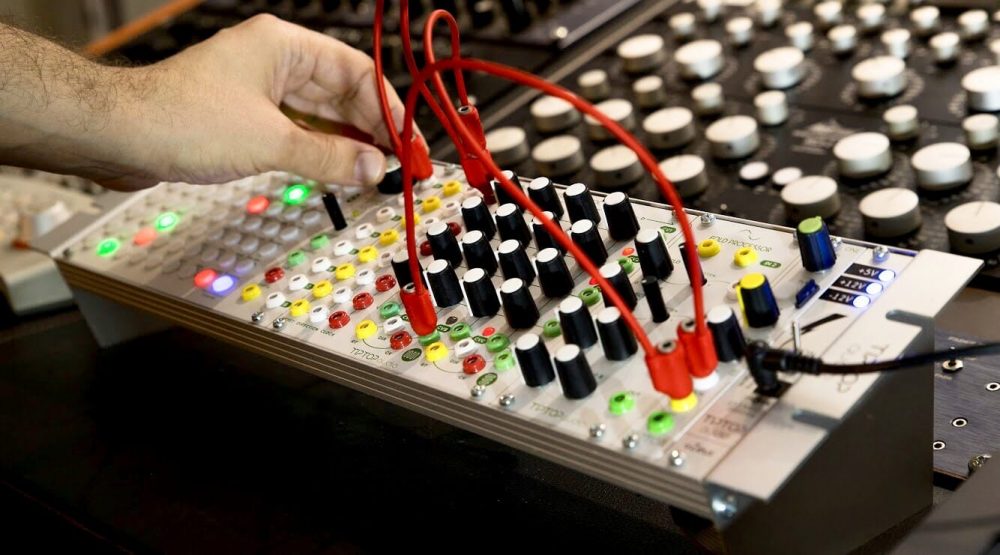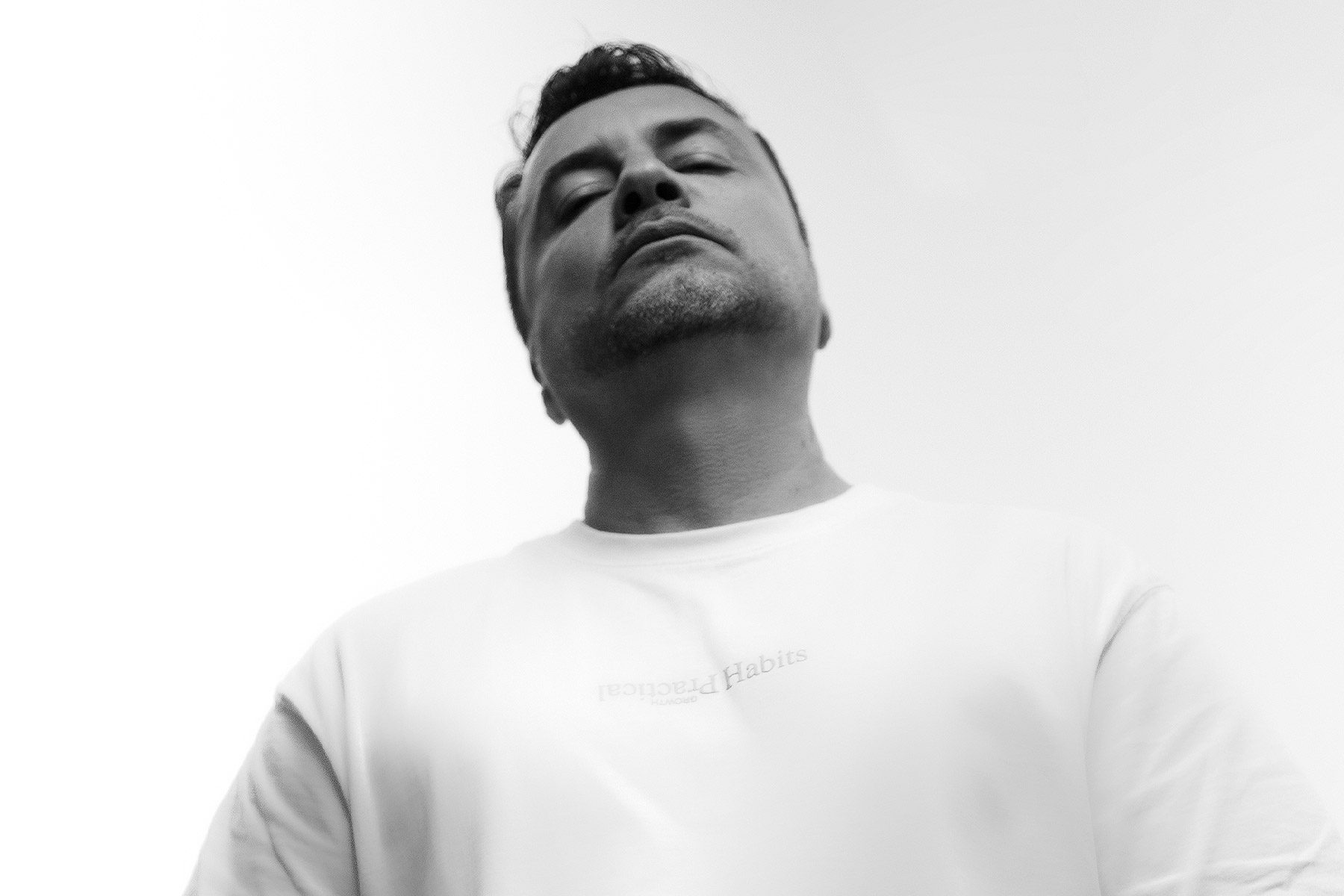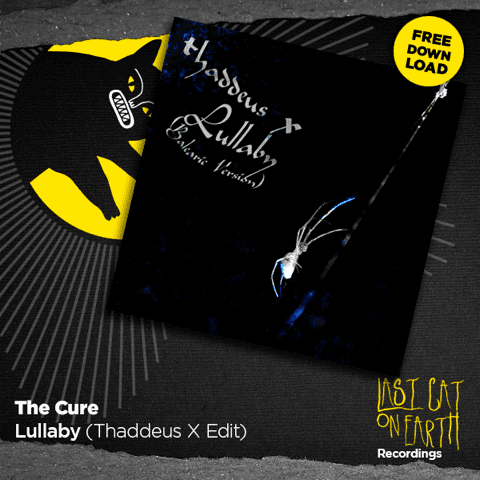When you attend an electronic music conference such as London Music Conference, you are always prepared to be greeted with the latest developments in all the tech gear. You will expect the usual suspects of the latest synthesizers, the newest Pioneer, Technics and Yamaha products, a new minimalistic electronic drum pad, state of the art audio systems or maybe a showcase of the newest Serato software. This event is no exception with demos of all kinds of funky piece of kit, however, I am particularly drawn to a man, sat at a table under the dim red Fabric club lights casting a maroon spotlight, immersed fully in what can only be described as a vibrant mix of wires, lights, switches, buttons, toggles, rotaries, indicators and crossfaders, and a wonderful continuous sound that is shifting and morphing constantly.
What looks like hundreds of tiny outlets and inputs are cascaded by wires, all coming out of each other and intertwining – like a complex organ of a space ship or perhaps something a little more disjointed and less organized. There’s something so intriguing to this concept because due to the way this seemingly crazy arrangement of pieces of equipment all interlink – it creates very unique music. Sounds that you can only imagine hearing at a very obscure exhibition at The Tate Modern or from an 80’s sci-fi movie. Maybe even mix in some Scooby-Doo for good measure. This is the modular sound. It is analog and the most beautiful part is that it is completely unique to the user. The output sound is like the fingerprint of the producer and despite its daunting appearance, anybody can play. And it’s a lot of fun.
I approach the gentleman at the TipTop Audio stand, and after learning from a fellow exhibitor that his name is Konstantin Gervis, I immediately know that I will be engaging with a fellow Russian. Naturally, we converse in our native language. He seems to be pleased to be speaking in his mother tongue that he rarely gets to practice nowadays and so we begin our journey.
Originally from Yekaterinburg, Konstantin has been mainly residing most of his life in Israel since the collapse of the Soviet Union in 1991, with periodic stays in London and now a Berliner since 2015. Electronic music has been a life-long endeavor since 1997. Since the early 2000s, his particular focus has been cast onto techno and experimental electronics through various projects including ‘Seventeen Migs of Spring’ – a concept based on abstract themes including aerospace and espionage with a previous co-founder from previous punk-rock band days and an old flame.

After some time, the project fell apart and there was a break before the calling for techno returned, but there was a need for something better in terms of instruments. Whilst at the time there were various sequencers and devices in place, each have their own philosophy and story. “You have to constantly redirect your brain from one device and their workflow to the other which is counterproductive. You can’t really relax, you have to constantly think. Music and thinking shouldn’t go together. You should just ‘do’ intuitively”.
Having heard of the earlier types of modules, it was time to give this a go and it was the perfect occasion for everything to fall perfectly into place. All the studio equipment has funneled down into one perfect modular system. “The beauty of this all is that this equipment is perfectly customizable to you, to your workflow and your tastes”, Konstantin goes onto explain the benefit of having all parts to play to your command. “If you want the drum machine, you engage it, if you don’t want it a split moment, you can switch it off. You can’t have this ease of accessibility with software. You have to fine-tune, then you forget what you set it to or may even lose the changes”.
Timing is another important factor to consider which contrasts analogue production from MIDI Hardware. With modular production, while the timing may seem identical, on a technical level one piece of sound goes out after the other, which creates this very unique incomparable noise. This is all based on super tight modular timing, something that comparably MIDI hardware cannot re-enact. Also, modular tends to follow a very simple concept that fellow modular guru Navs coined as “basic electricity”. It’s an uncomplicated process and the whole entire world of modular is actually incredibly simple. Indeed, it seems that modular production is all a lot less hassle than meets the eye.
Coming to terms with the wholly different approach and experience of modular sound, Konstantin started to build his grid up with TipTop Audio over the years. He joined forces with the production team that comes from a colorfully international background (Boston, Los Angeles, Israel, and Italy) and after some time producing the products in Los Angeles, with increasing demand, opened their own production factory in Thailand. “The Thai have a very similar work etiquette to the Japanese, for this reason, we felt out products are best produced over there. We also take an active role in the production process as opposed to having the work commissioned and sent away somewhere”.

Ordinarily, Tip Top Audio will not release module after module, but rather stick to one product and maybe update these every 7 years or so. Therefore you will always have a reliable and hardy product. A complete modular grid will set you back at least €3,500. This price would cover the complete set of the drum generators (808 Bass,SD808 Snare, CP909 clap, RS909 Rimshot), sample players, percussion, hats, loopers, sequencers, that would easily see you through a 3-hour set with any kind of preparation.
“I can turn up and decide what and how I am playing, at what speed at any venue depending on the time, the kind of crowd I’m catering to, how I would like to roll it out. […]I can loop anything out of the arrangement and meanwhile create new patterns, sequences and sounds on headphones, ready to line up into the next phase of the music, but otherwise, I don’t really plan or know what’s going to come next. I even sometimes surprise myself with the stuff I can come out with”. Konstantin breaks the kit down to seem like actually a very straightforward setup.
Besides the aforementioned, there are also master effects and multi-effects., wide-range oscillators and synth processors. The synth processor is a particular module that excites – explaining only as the center point that blends all the modular processes together creating a fusion of all the on-going sounds. The only way to describe it is when all the aspects of a song overlap together, something you would imagine hitting an ultimate peak at an Awakenings Gashouder set.
Like any kind of instrument, the TipTop Modular synthesizer needs dedicate practice time. However, even in the short time available, it was really insightful and inspiring to try it out oneself and see where the journey can take you. For this is exactly what modular music is, it’s a journey and where you take yourself and with it your audience. Or just yourself if you play purely for your own satisfaction.
As Konstantin mentioned “I don’t cater to anyone, I play for me and my enjoyment. If it can bring some kind of income with it, even better”, and his musical passion expertise is clearly reflected in the way he quietly and calmly twists and changes the many switches, knobs and wires under the dim lights while a small audience quietly gathers around him throughout the day watching quietly mesmerized.
Konstantin also has a private project based on modular sound called ZV_K Processor, which can be checked on the following link http://www.zv-k.com
For more info about TipTop Audio click here.












